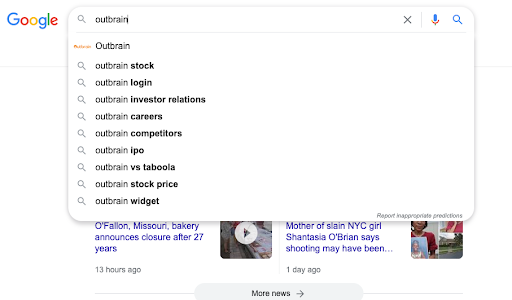SEO Writing Checklist for Non-SEO Professionals


If you’re reading this, then you probably want to improve the SEO of your website or blog, but don’t know enough about SEO to get started. You’ve come to the right place!
An SEO professional knows all the tricks of the trade about how to get visibility on search engines and drive more traffic to a particular site. A non-SEO professional can also learn how to optimize content and get higher rankings on search engines by following some basic SEO guidelines.
You can make any article more effective by understanding what people are googling about the topic you’ll be writing about. That’s the essence of SEO – crafting content that is optimized for popular searches and geared towards what people want to read about online.
So here’s to all you non-professional SEOers. Dive into the checklist below and good luck!
SEO Basics: Keywords and Search Volume
Keywords are the words or phrases people use to search online, while search volume is an indicator of how many searches a particular keyword is being used for on Google.
As a rule of thumb, the more general a keyword is, the more search volume it will have. “Content marketing”, for example, will have a higher search volume than “programmatic native advertising”.
You can easily see a keyword’s search volume with this SURFER a free Chrome extension. You can set up the extension for your target country, and see the monthly search volume a certain query has.

Use search volumes as indicators to finetune your writing. Sometimes, you might like to compete for more general, high-volume keywords. In other cases, you may want to aim for a long-tail keyword (ie. “how content marketing can increase sales”) that is more specific and only has 90 or fewer monthly searches. There’s no hard and fast rule.
Most important is to stick to the way most users would intuitively search the topic. For example, “what is content marketing” gets more searches than “explanation of content marketing”.
How to Do Keyword Research
- Choose 2-5 keywords you wish to target with your article.
- Once you’ve identified the main keywords you want to target, google them to see what search results they bring up.
- Think about questions your readers might ask about the topic you are covering. Here are two techniques to help you find out what questions people are searching for:
- Type a keyword into the Google search bar and see what comes up on autosuggest (see screenshot below).
- Use Alsoasked.com or Answerthepublic.com to get a list of questions based on keywords you enter.

How to Build an Outline for Your Article
Good content is planned and structured, and that means you need an article outline. Once you’ve done your keyword research, it’s time to create one! Check out this sample – yours doesn’t need to be as detailed as this, but it will give you an idea of what an outline can look like.
Let’s get started building your outline:
- Create a hierarchy for the article, based on these general rules:
- Your title <H1> should focus on the general keyword you are targeting.
- Your subheadings <H2> & <H3> should reflect and answer the questions and subtopics you’ve gathered. Use them in a logical manner to provide structure to the article. This will make it easier for the reader to enjoy and provide more context for search engines, so you’ll hopefully rank higher.
- The most important keyword should ideally be incorporated into the main title of the article; the rest should be included in the body of your article. Make sure they flow naturally and serve the narrative of the piece – avoid stuffing the article with keywords for the sake of it.
- Remember! People online usually skim through rather than read.
- Include the main message you want to convey in the first part of the article.
- Keep paragraphs short (2-3 sentences). Make sure that sentences are not overly long.
- Google search prioritizes content that gives a great user experience. Make sure to break up the article with interesting elements such as these:
- Subheadings
- Lists (ordered, unordered)
- Quotes
- Images/ screenshots
- Videos
- Tweets
- Tables/ data
- Write as simply and as clearly as possible. Use easy, accessible vocabulary. You can use Hemingway to assist you.
Adding Links
Internal links (links to other pages on your website)
- If you have a company website with a lot of great content already featured, try to add a few internal links to strategic pages.
- Don’t link to your homepage, rather, link to value-added blog posts, articles, or guides.
External links (links to other websites)
- Link externally to authoritative sources only. It’s better to steer clear of general websites.
- If you make a claim or refer to a statistic, be sure to link to it. It is always best to link to the original source of the claim/statistic if possible.
- Linking to competitors who are already ranking high for the same topic you are covering can be counterproductive, keep this in mind when choosing your links.
- Don’t include unnecessary links. If you are mentioning a well-known brand, should you really link to their site? Generally, always aim to link to sources that will provide extra value to your reader.
- Avoid linking to home pages or product pages. Rather, link to blogs or articles that provide knowledge or value.
- Use descriptive anchor texts for links. Try to avoid generic terms like: learn more, click here, etc. For example, see the anchor text below (in orange), which is the text that links to the referenced URL – it describes what the reader can learn more about if they click through:
Images
Here are some quick tips to improve SEO of the images in your article:
- Make the image filename a descriptive one. Don’t leave it as a generic name, such as “screenshot”.
- Use a descriptive alt text.
- Use screenshots to support and explain your article, if needed.
- If you can, steer away from stock photos.
Meta Tags & URL
The meta tags and web address (URL, or “slug”) of your article are important components of SEO strategy. Here are some guidelines to follow:
- If you have a WordPress site, use Yoast, RankMath or your choice of SEO plugin. This will allow you to create a Title and Meta description, which will hopefully appear in search results (search engines sometimes rewrite those algorithmically) it helps to keep with the character limits suggested by your plugin.

- When choosing the texts, use the recommendations provided by Yoast, but you don’t have to stick to them. Rely on your instinct to come up with something that incorporates what Yoast recommends and what you’d like to include.
- The slug (URL) of your article will automatically be set to the title of the article. You should override this option and choose a short and easy-to-understand URL.
For example, instead of: https://www.outbrain.com/blog/how-to-write-persuasive-ad-copy-that-converts
Simply go with: https://www.outbrain.com/blog/ad-copy
- If your content is supposed to be evergreen don’t include the date or year in your URL. Doing so puts a time limit on the relevance of the article.
For example, instead of: https://www.outbrain.com/blog/3-holiday-marketing-tips-to-increase-sales-in-2022/
Go with: https://www.outbrain.com/blog/3-holiday-marketing-tips-to-increase-sales/
So there you have it, the complete SEO writing checklist for non-professionals. We hope it helps your SEO. Want to learn more? Check out these articles, and see you on the first search results page!
The post SEO Writing Checklist for Non-SEO Professionals appeared first on English (US).
Source: https://www.outbrain.com/blog/feed/